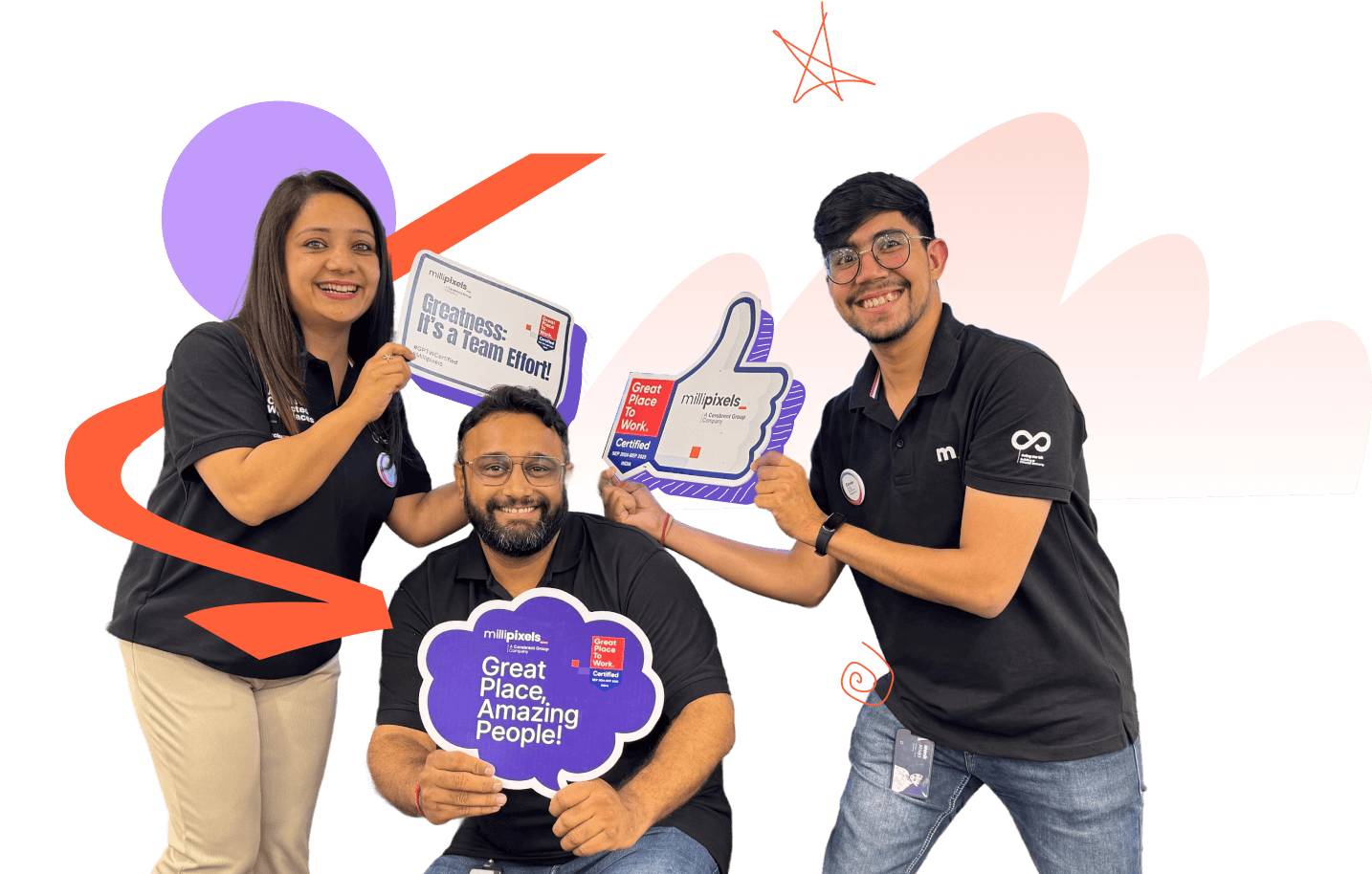Blog
How Cloud 3.0 Unites AI Workloads with FinOps and Sustainable Operations
Discover how Cloud 3.0 is transforming enterprise strategy by uniting AI workloads, FinOps, and GreenOps. Learn how forward-thinking businesses are leveraging this convergence.
November 13, 2025

Introduction
What if your cloud infrastructure could power cutting-edge AI, drive financial efficiency, and support your sustainability goals—all at once?
That’s not a future promise. That’s the reality of Cloud 3.0—a strategic evolution that’s transforming cloud from a utility into a competitive differentiator.
The first wave of cloud adoption—Cloud 1.0—focused on scalability and cost savings, mainly through migrating legacy systems. Then came Cloud 2.0, bringing hybrid and multi-cloud environments that delivered greater flexibility and freedom from vendor lock-in.
Now, we’re entering a new phase—Cloud 3.0—where AI Workloads, FinOps, and GreenOps are converging. This convergence isn’t just a tech trend—it’s a new operational model that empowers enterprises to unlock intelligence at scale, control costs with precision, and embed sustainability into every digital decision.
So what exactly defines Cloud 3.0—and why does it matter now? Let’s unpack the shift.
Defining Cloud 3.0: Intelligence, Efficiency, and Sustainability
Cloud 3.0 is more than an iteration—it's a strategic leap. It marks the convergence of three critical enterprise imperatives: AI workloads, FinOps, and GreenOps. In previous cloud eras, enterprises pursued agility and scale. But today, with AI reshaping operations, budgets under intense scrutiny, and ESG mandates becoming boardroom priorities, Cloud 3.0 delivers an integrated model to meet all three needs simultaneously.
This version of the cloud isn’t just a hosting platform—it’s an intelligent operating system for the modern enterprise. It handles compute-intensive AI/ML workloads. It delivers cost observability and accountability through FinOps frameworks. And it actively reduces your environmental impact with GreenOps strategies.
Why now? Because the stakes are higher than ever. AI training and inference workloads are exploding. Cloud waste continues to climb—$67 billion was estimated in wasted cloud spend globally in 2023 alone. And sustainable operations are no longer optional—they’re investor and consumer expectations.
Cloud 3.0 is about building resilient, cost-efficient, and future-forward infrastructure that keeps your organization agile and accountable. It’s the cloud reimagined—not just for IT leaders, but for CFOs, Chief Sustainability Officers, and transformation heads alike.
AI Workloads: Catalyzing Cloud Transformation at Scale
AI is no longer a niche capability—it’s the heartbeat of modern enterprise transformation. But scaling AI across business functions requires a next-gen cloud infrastructure built for intelligence, performance, and agility.
Cloud 3.0 empowers enterprises to operationalize AI at scale by:
- Delivering elastic compute on demand: High-performance infrastructure with autoscaling support for AI training and inference, including support for GPUs, TPUs, and custom accelerators.
- Enabling seamless MLOps integration: From data ingestion to model versioning and continuous deployment, Cloud 3.0 simplifies and accelerates the full AI lifecycle.
- Supporting hybrid and edge deployments: Run AI workloads closer to data sources—whether at the edge, in the datacenter, or across hybrid environments—for faster insights and real-time responsiveness.
- Optimizing data pipelines: Handle massive data volumes with cloud-native analytics, real-time streaming, and federated learning capabilities.
- Ensuring governance and security: Built-in tools for access control, bias mitigation, auditability, and secure model serving.
Why it matters:
According to McKinsey, AI use cases could unlock up to $4.4 trillion in annual economic value. But realizing this potential requires more than isolated innovation. It demands infrastructure that’s intelligent by design.
With Cloud 3.0, enterprises can shift from experimentation to enterprise-wide intelligence—redefining experiences, streamlining operations, and unlocking new revenue models. This isn’t an incremental upgrade. It’s foundational to long-term competitiveness.
FinOps: Driving Financial Accountability in the Cloud
In the world of Cloud 3.0, innovation can’t come at the expense of financial discipline. As enterprises scale their AI, data, and digital platforms, cloud costs can spiral—unless tightly managed. That’s where FinOps steps in as a business-critical capability.
FinOps—short for “Cloud Financial Operations”—brings together engineering, finance, and operations teams to optimize cloud usage and align spend with strategic outcomes. It’s not just about cost-cutting; it’s about making smarter, real-time decisions that balance performance and budget impact.
According to the FinOps Foundation’s State of FinOps Report, 77% of organizations cite cost allocation and visibility as their top challenges. And over 58% say improving forecasting and budgeting is now a top priority.
Cloud 3.0 embeds FinOps into the fabric of cloud strategy. It enables dynamic rightsizing, automates usage tracking, and supports real-time cost anomaly detection. It empowers finance leaders with dashboards and insights, while giving engineers guardrails to innovate responsibly.
Done right, FinOps is a growth enabler. It helps enterprises fund what matters—like AI innovation or global expansion—while keeping cloud waste in check. In Cloud 3.0, financial governance and operational agility don’t compete—they coexist. The winners will be those who can master both.
GreenOps: Embedding Sustainability into Cloud Strategies
Sustainability is no longer a peripheral concern—it’s a boardroom priority. As cloud consumption increases, so does the environmental footprint. That’s where GreenOps becomes essential.
GreenOps introduces operational practices that measure, manage, and reduce carbon emissions associated with cloud usage. It empowers organizations to align IT strategy with ESG goals by:
- Monitoring cloud energy consumption and carbon intensity in real time
- Optimizing workloads for energy-efficient regions and renewable-powered datacenters
- Identifying idle resources and minimizing waste through automation
- Integrating sustainability metrics into cloud governance and procurement decisions
In the Cloud 3.0 era, sustainability is no longer a trade-off—it’s a competitive differentiator. GreenOps gives enterprise leaders the tools to act on their sustainability commitments while maintaining cloud performance, cost-efficiency, and innovation velocity.
The Strategic Imperative of Convergence
Individually, each of these forces is reshaping the enterprise cloud landscape. But it’s their convergence that defines Cloud 3.0—and creates exponential value. Why? Because these pillars reinforce one another. Intelligent AI models require efficient, scalable infrastructure. Scalable infrastructure demands financial accountability. And financial optimization opens the door for sustainable, energy-conscious decisions.
In a world defined by data velocity, cost volatility, and climate urgency, convergence isn’t a luxury—it’s a strategic necessity. Cloud 3.0 allows organizations to:
- Deploy AI-driven innovation at speed
- Drive granular visibility and control over cloud spend
- Deliver on ESG commitments with measurable impact
- Create future-ready infrastructure that scales intelligently and responsibly
This convergence also breaks down organizational silos. It brings CTOs, CFOs, CIOs, and CSOs to the same strategic table, creating shared priorities and KPIs across departments.
Forward-looking enterprises are already building Cloud Centers of Excellence that combine MLOps, FinOps, and GreenOps capabilities under unified governance. This creates a cloud operating model that’s not just reactive, but proactive, data-informed, and purpose-driven.
Cloud 3.0 isn’t just where tech is going. It’s how business leaders will thrive in an economy defined by intelligence, efficiency, and sustainability.
Conclusion: Embracing Cloud 3.0 with Clarient
Cloud 3.0 is here—and the future favors those who are prepared to lead it.
At Clarient, we help enterprises harness the full power of converged cloud strategies. From architecting AI-ready environments to implementing FinOps best practices and building measurable sustainability into your cloud footprint, we partner with you at every step.
Don’t just migrate—modernize with purpose. Build a cloud strategy that’s intelligent, accountable, and sustainable by design.
Ready to activate Cloud 3.0 for your enterprise?
Let’s co-create what’s next. Contact Clarient to get started.

Parthsarathy Sharma
B2B Content Writer & Strategist with 3+ years of experience, helping mid-to-large enterprises craft compelling narratives that drive engagement and growth.
A voracious reader who thrives on industry trends and storytelling that makes an impact.
Share
Are you seeking an exciting role that will challenge and inspire you?

GET IN TOUCH